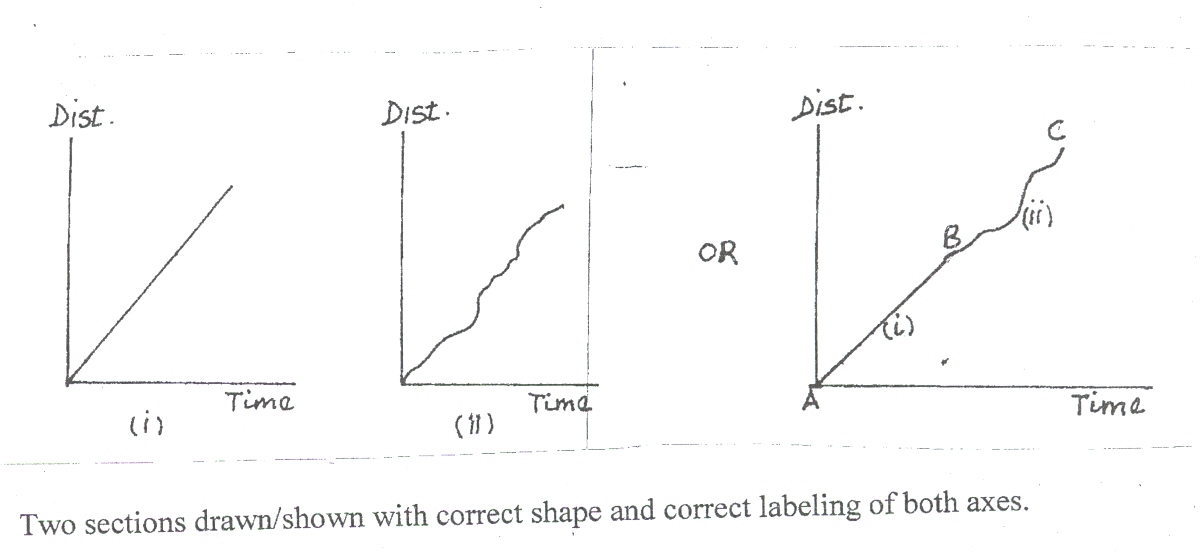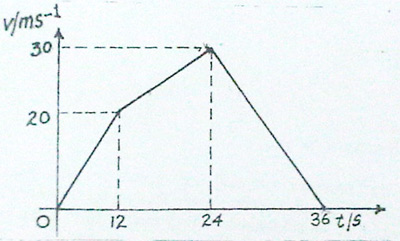Part (a). Performance was fair. Some of the respondent candidates failed to mention decrease in
kinetic energy for the case of perfectly inelastic collision. Some candidates also failed to note
that the question highlighted perfectly elastic collision and not ordinary elastic collision.
Part (b). Performance was high for (i), but low for (ii).
Part (c). This part was poorly tackled by candidates due to the use of wrong equations of motion
and poor computational skills.
The expected answers are:
(a)Any 2 correct pairs 

(c)(i) 1st stage of motion
x = ut + 1/2at2
120 = 0 x 12 + 1/2 X a x 122
a= 5/3
V1 = 5/3 x 12 = 20 ms-1
2nd stage of motion
x = ut + 1/2at2
300 =, 20 x 12 + ½ x a x 122
60 = 72a
a = 5/6
V = 5/6 x 12 = 10
V2= 10 + 20
= 30ms·1
3rd stage of motion
x = ut + 1/2at2
180 == 30 x 12 + ½ x a x 122
180 = 72 a
a = - 5/2
V = -5/2 x 12= -30
V3 = 30 + -30
= 0 ms·1
(ii)

Correct shape of each segment in
relation to axes
Origin, (0.0) labeled
Only one axis labeled |



